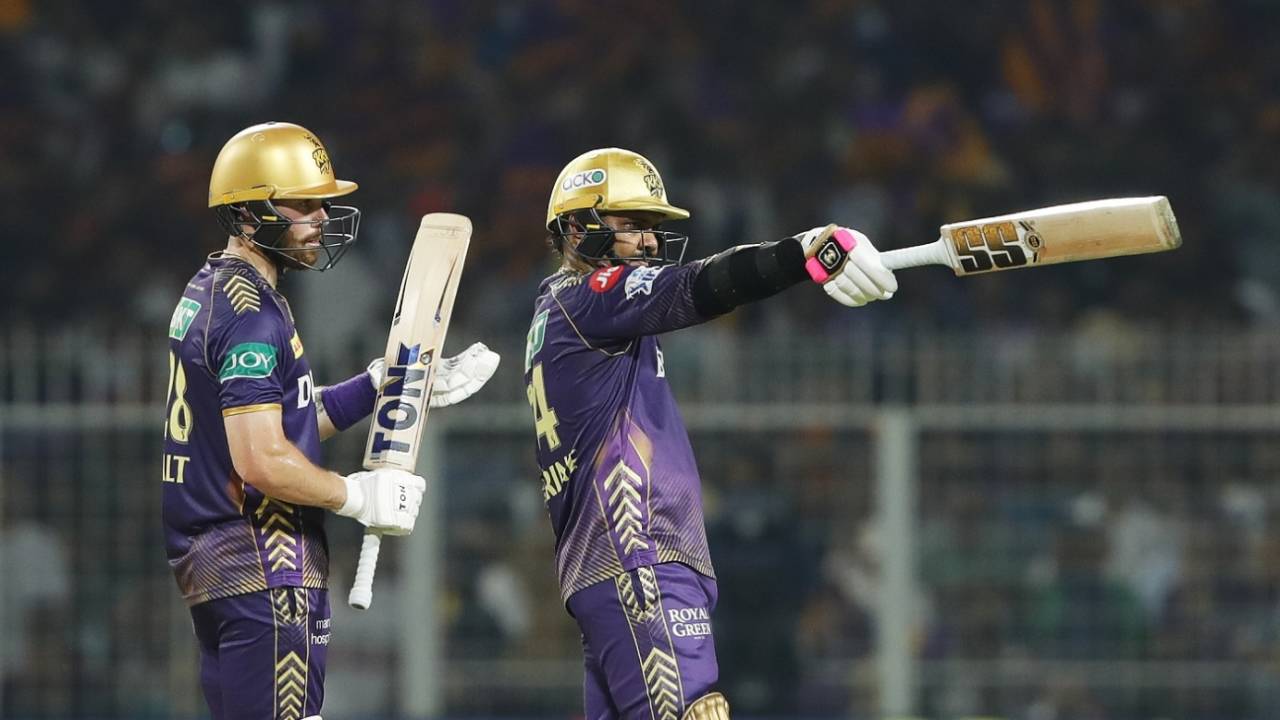Seven of the ten highest powerplays, including the top two.
At 1260 from 1124, the biggest jump in number of sixes from edition to edition.
All of it happened in IPL 2024. Looking at some of the staggering numbers, it would appear something broke in the balance between bat and ball this year.
In the overall numbers, though, the average scoring rate went up at a similar increment as it has been doing over the last three years: 8.05 in 2021 to 8.54 in 2022 to 8.99 in 2023 to 9.56 in 2024. That's an increase of 11.4 runs every completed innings. Now that we put it this way, it doesn't seem as staggering as some of the high-scoring innings we have seen but it is still a significant rise in scoring rates.
There have to be some actions resulting in these outcomes. We looked at intent first. ESPNcricinfo's intent logs are robust enough to be comparable from 2021. Aggressive intent is basically a boundary attempt. It would be fair to assume the intent to score boundaries might have gone up with the introduction of the Impact Player.
Three extra boundary attempts every 200 balls is not the bump in the intent we expected from such an IPL edition. The change in the intent, and indeed the efficiency of aggressive intent, has been marginal. Only 5.7 of the 11.4 incremental runs scored per innings this year over the last can be attributed to the intent this year and its efficiency.
But there is one period of play that does stand out. While the overall increase in powerplay and death overs scoring rates has been marginal, overs 7 to 12 have been worth 4.26 more runs per innings.
In terms of overall numbers, though, it doesn't seem like this has been a landmark year in the way teams have approached or executed their run-scoring. That would point to flatter pitches and smaller boundaries, the latter even if marginally so. Perhaps the set of balls this year did a little less too. It did show in the later stages of the tournament where a little bit of help for the bowlers resulted in significantly lower scores.
Looking at just overall numbers, though, will be a disservice to the revolutionary seasons Kolkata Knight Riders (KKR), Sunrisers Hyderabad (SRH), Royal Challengers Bengaluru (RCB) and Delhi Capitals (DC) have had. KKR broke the record for the highest average innings in a single year by 21.8 runs. The other three, too, went comfortably past the number set by RCB in 2016: 192.4. That RCB effort from 2016 remains a freak occurrence as all the other big years from single teams have come in 2023 and 2024.


